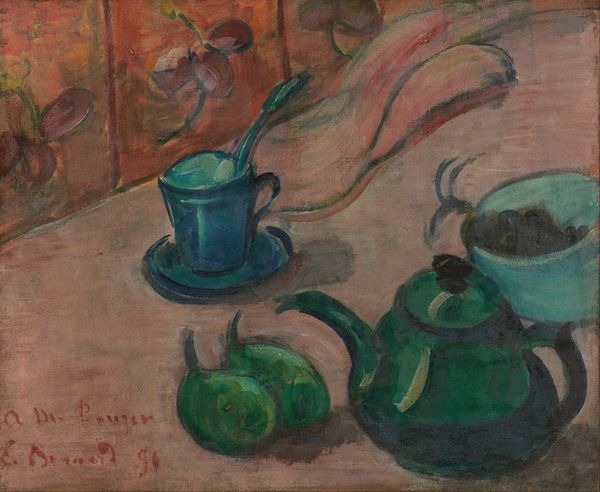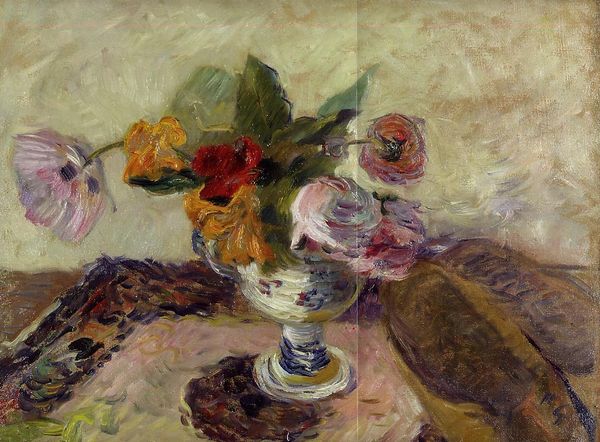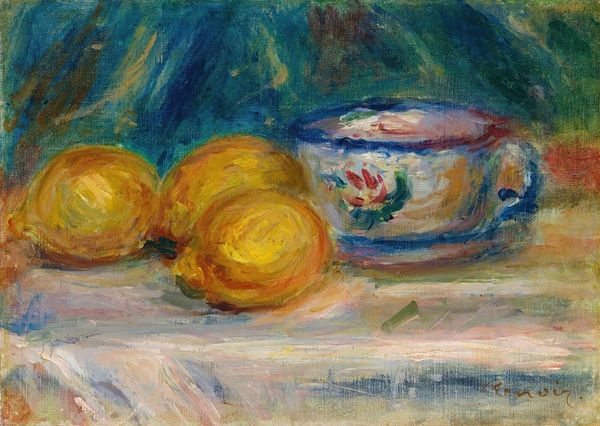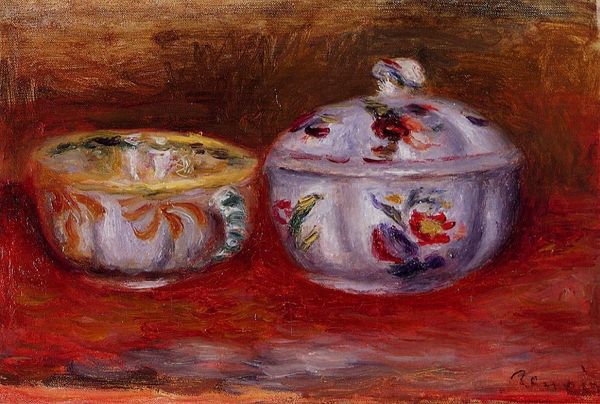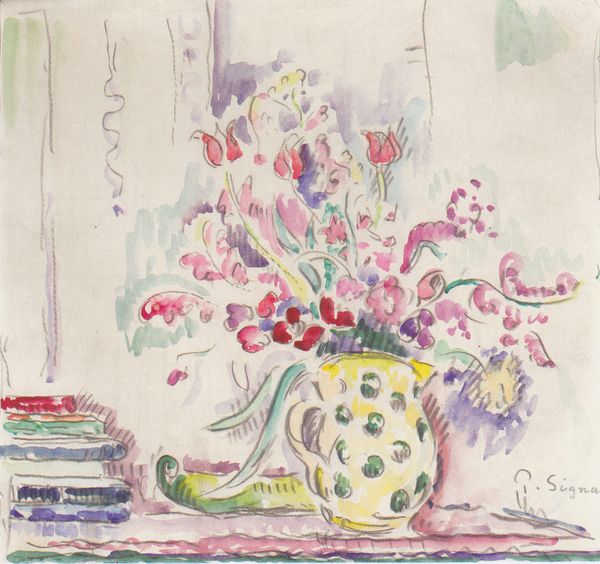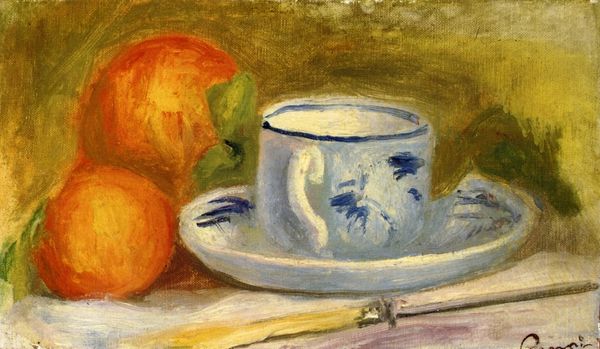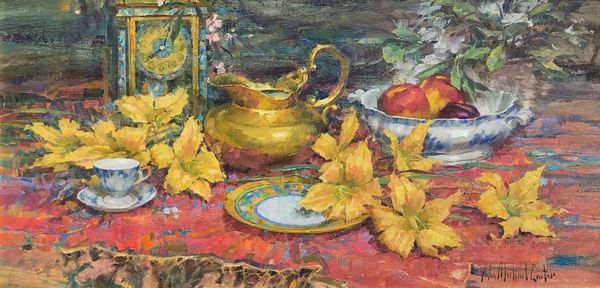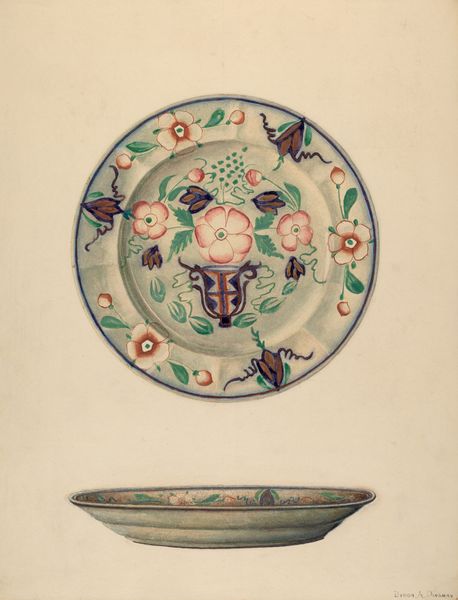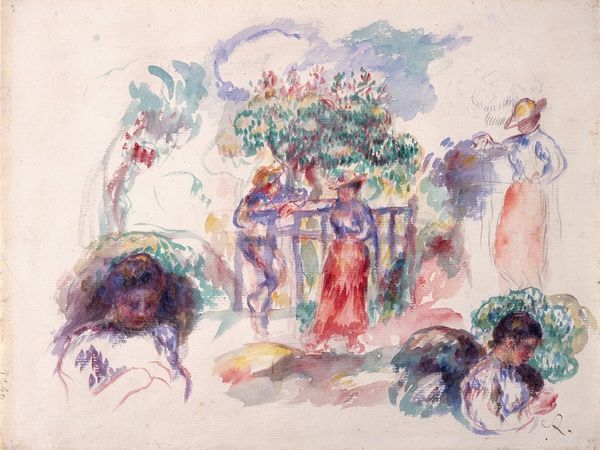
Copyright: Public Domain: Artvee
Curator: Pierre-Auguste Renoir painted "Faïences Décorées" around 1916, rendering decorative arts in oil paint using the impasto technique. It’s interesting to view these highly crafted decorative objects depicted through the subjective lens of impressionism. Editor: Immediately, I see the composition as deliberately arranged, almost as if it’s questioning the historical perception of decorative art’s place in fine art and design production hierarchies. There's a stillness to it, a kind of quiet commentary, that seems characteristic of Renoir's late period. Curator: Precisely. Renoir, in his late career, demonstrates a fascinating dialogue with craft through these pieces. You have to consider the role of the artisan—often anonymous or devalued within traditional art historical narratives. Are the objects pre-existing, commodities made by factory workers, or bespoke, unique to a smaller art studio? This challenges notions of originality. Editor: And it really encourages us to ask questions about the conditions of production at the time. Consider, too, the intersection of gender and class – who was employed making these ceramic items? How did industrialization and new access to products impact those industries and individuals who were historically relegated? There is real sociopolitical context here, far beyond aesthetic concerns. Curator: Agreed. And that's magnified through his technique. Look at how the brushstrokes give these supposedly ‘functional’ objects an emotional weight and artistic significance beyond the inherent materials that create them, questioning what separates commodity and craft. The landscapes in miniature on the plates become stand-alone works themselves through the transformative method. Editor: Absolutely. These works within works on the ceramic serve almost as acts of remembrance as well, referencing traditional imagery through an evolving and ever changing society. The composition and setting allow Renoir to address, reflect, and immortalize these vignettes for all of posterity, almost as he would his favorite model, Gabrielle. It speaks to issues of identity, and preservation in this quickly modernizing time. Curator: So, by paying attention to the texture, and Renoir’s specific painting practices, we understand both the status and value attributed to objects within various modes of art and production in this moment. Editor: Which offers an entryway into discussions about class, production and art's broader social responsibilities as well, proving the far-reaching scope within this singular work.
Comments
No comments
Be the first to comment and join the conversation on the ultimate creative platform.


